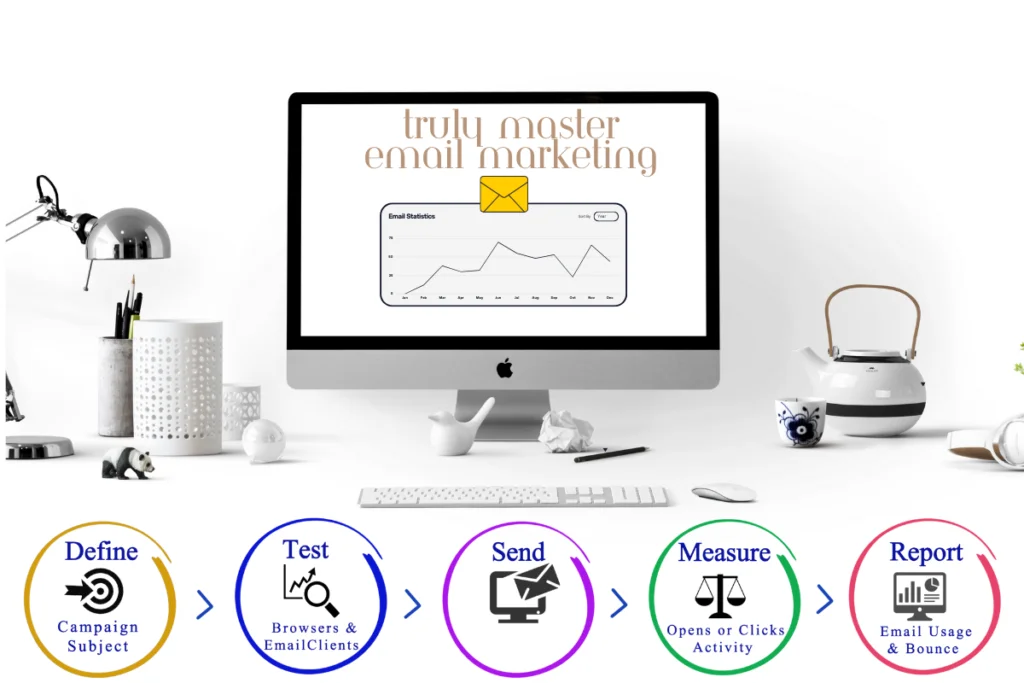In the world of affiliate marketing, email campaigns can play a crucial role in driving conversions and boosting revenue. However, to truly master these campaigns and ensure maximum success, there are important dos and don’ts to keep in mind. From crafting compelling subject lines to avoiding spammy tactics, this article will provide you with valuable insights and practical tips to enhance your affiliate marketing email campaigns and achieve impressive results. Whether you’re a seasoned marketer or just starting out, implementing these strategies will help you connect with your audience, generate more leads, and ultimately, increase your affiliate earnings.
Dos for Mastering Affiliate Marketing Email Campaigns
Personalize your emails
When it comes to affiliate marketing email campaigns, personalization is key. Gone are the days of sending out mass emails to your entire subscriber list and hoping for the best. By personalizing your emails, you can tailor your message to each individual recipient, increasing the chances of engagement and ultimately, conversions.
Start by addressing your subscribers by their name in the email salutation. This small touch shows that you value them as an individual and not just another email address on your list. Use the data you have collected on your subscribers to personalize the content of the email as well. This could include referencing past purchases or interactions, or even sending targeted offers based on their specific interests or preferences. The more relevant and personalized your emails are, the more likely your subscribers will be to take action.
Segment your email list
Segmenting your email list is another essential step in mastering affiliate marketing email campaigns. Rather than sending the same message to your entire subscriber base, segmenting allows you to divide your list into different categories based on specific criteria, such as demographics, purchase history, or engagement level.
By segmenting your list, you can send more targeted and relevant emails to each group. For example, you may create a segment for customers who have made a recent purchase and send them follow-up emails with product recommendations or exclusive discounts. Or, you may target subscribers who have shown interest in a particular product category and send them tailored content related to their preferences.
Segmenting allows you to deliver more personalized content and increase the likelihood of engagement and conversions for each group within your email list.
Use compelling subject lines
The subject line of an email is like the hook that catches the reader’s attention. A compelling subject line can significantly impact whether a subscriber will open your email or simply let it sit in their inbox, untouched. Therefore, it’s crucial to invest time and effort into crafting subject lines that grab attention and entice the recipient to open your email.
To create compelling subject lines, consider using emotional triggers, curiosity, and urgency. For example, you could use subject lines such as “Exclusive offer just for you!” or “Limited-time discount, don’t miss out!” These subject lines create a sense of exclusivity and urgency, compelling the recipient to open the email and discover more.
Additionally, personalization can also be applied to subject lines. Including the recipient’s name or referencing their past interactions can make the email feel more tailored and increase the chances of it being opened. Experiment with different subject line strategies, monitor the open rates, and adjust accordingly to optimize your email campaign’s success.
Include strong call-to-action
A call-to-action (CTA) is a crucial element in any affiliate marketing email campaign. It is the part of the email where you encourage the recipient to take a specific action, such as making a purchase, signing up for a webinar, or downloading a free resource.
To create strong CTAs, make them clear, concise, and compelling. Use action verbs and emphasize the value the recipient will gain from taking the desired action. For example, instead of simply saying “Shop now,” you could use a more compelling CTA like “Get 50% off – Shop now and upgrade your wardrobe!” By highlighting the benefit and urgency, you increase the chances of your subscribers taking action.
Additionally, make sure your CTAs stand out visually. Use contrasting colors, bold fonts, or buttons to draw attention to them. You want your CTA to be easily visible and accessible to encourage click-through rates and conversions.
Create valuable and relevant content
The content of your affiliate marketing email campaign should be focused on providing value and relevance to your subscribers. Gone are the days of purely promotional emails. Instead, aim to create content that educates, entertains, and solves your subscribers’ problems.
Provide information that genuinely benefits your readers and helps them achieve their goals. This could include tips, tutorials, industry insights, or product recommendations. By positioning yourself as a trusted source of valuable information, you build credibility and foster stronger relationships with your subscribers. As a result, they’ll be more likely to engage with your emails and products.
Additionally, make sure your content is aligned with your target audience’s interests and preferences. Understand their pain points and desires, and tailor your content accordingly. A well-crafted email that addresses their specific needs will resonate more with your subscribers and increase the chances of conversions.
Test different email formats
Don’t be afraid to experiment with different email formats in your affiliate marketing campaigns. What works for one audience might not necessarily work for another. By testing different formats, you can gather data and insights on what resonates best with your specific audience.
Try different email layouts, such as single-column or multi-column designs, to see which one yields higher engagement or click-through rates. Experiment with different lengths of emails – sometimes shorter and punchier emails work best, while in other cases, a longer, more detailed email may capture the attention of your audience.
Additionally, test different elements such as images, videos, and GIFs to see how they impact engagement. Sometimes visual content can make a significant difference in capturing the attention and driving conversions.
By continuously testing and analyzing your campaign’s performance, you can refine your email formats and optimize them for better results.
Focus on building strong relationships
Affiliate marketing is not just about making a one-time sale. It’s about building long-term relationships with your subscribers and customers. By focusing on relationship-building, you can create a loyal customer base that continues to engage with your emails and purchase from your affiliate partners.
Take the time to engage with your subscribers beyond promotional emails. Send them occasional non-promotional emails, such as newsletters or exclusive content, to foster a sense of community and provide additional value. Respond promptly to any questions or feedback they may have, and show genuine care for their needs.
Building relationships also entails being transparent and honest with your subscribers. If you are promoting affiliate products, make it clear that you may receive a commission. This builds trust and credibility, as your subscribers understand that you’re being upfront about your involvement and recommendations.
Track and analyze campaign performance
To truly master affiliate marketing email campaigns, it’s essential to track and analyze your campaign’s performance. Monitor key metrics such as open rates, click-through rates, conversion rates, and revenue generated. This data will give you insights into what’s working and what can be improved.
Utilize email analytics tools to track the success of your campaigns. These tools can provide valuable data on subscriber behavior, allowing you to understand which emails are resonating with your audience and driving conversions. Use this data to make informed decisions about your email content, subject lines, and call-to-action strategies.
Regularly reviewing and analyzing your campaign’s performance will help you identify opportunities for optimization and improve your overall email marketing strategy.

Ensure email deliverability
No matter how well-crafted your emails are, they won’t be effective if they don’t reach your subscribers’ inboxes. Ensuring email deliverability is essential in mastering affiliate marketing email campaigns.
To improve deliverability rates, follow best practices such as using a reputable email service provider, authenticating your domain, and maintaining a clean email list. Regularly clean your list by removing inactive or unengaged subscribers and regularly monitoring for any bounce backs or spam complaints.
Avoid using spam trigger words or phrases in your subject lines and content, as this can negatively impact your deliverability. Additionally, test your emails before sending them out to check for any formatting or deliverability issues.
By taking proactive measures to improve email deliverability, you can maximize the reach and impact of your affiliate marketing email campaigns.
Regularly update and optimize your email campaigns
Affiliate marketing is a dynamic industry, and what works today may not necessarily work tomorrow. To stay ahead of the curve and maximize your campaign’s success, it’s crucial to regularly update and optimize your email campaigns.
Continuously evaluate your email content, subject lines, and call-to-action strategies to identify areas for improvement. Keep an eye on industry trends and best practices, and adapt your campaigns accordingly. Experiment with new tactics, such as personalization techniques or interactive elements, to keep your emails fresh and engaging.
Regularly test different email formats and content variations to gather data on what resonates best with your audience. Analyze the results and make data-driven decisions to optimize your campaigns for better performance.
By staying proactive and adaptive, you can ensure your affiliate marketing email campaigns remain effective and drive the desired results.
Don’ts for Mastering Affiliate Marketing Email Campaigns
Use generic or spammy subject lines
One of the biggest mistakes you can make in affiliate marketing email campaigns is using generic or spammy subject lines. Subject lines that sound too salesy or lack relevance can make your emails appear untrustworthy or spammy, resulting in low open rates and poor engagement.
Avoid using subject lines that make false promises or overhype your emails’ content. Instead, aim for subject lines that accurately represent the value or benefit your subscribers will receive by opening the email. Make it clear and concise, and avoid using excessive capitalization, exclamation marks, or spam trigger words.
By focusing on creating genuine and relevant subject lines, you can improve the open rates and overall success of your email campaigns.
Send emails to irrelevant or uninterested recipients
While it may be tempting to send your emails to as many people as possible, it’s important to resist the urge to send emails to irrelevant or uninterested recipients. Not only does this waste resources, but it can also harm your reputation and deliverability.
Invest time in analyzing your subscriber list and segmenting it based on relevant criteria. By sending targeted emails to specific segments, you increase the chances of engagement and conversions. Focus on quality over quantity, and prioritize delivering your message to subscribers who are most likely to be interested in your offers.
Overwhelm subscribers with excessive emails
Bombarding your subscribers with excessive emails is a surefire way to annoy and alienate them. While regular communication is important, it’s equally important to strike a balance and avoid overwhelming your audience.
Pay attention to email frequency and consider the preferences of your subscribers. Monitor engagement metrics to see if an increase or decrease in email frequency correlates with changes in open rates or click-through rates. Use this data to find the optimal frequency that keeps your audience engaged without overwhelming them.
Additionally, offer options for subscribers to customize their email preferences. Allow them to choose the frequency or type of emails they receive, ensuring they remain engaged and interested in your content.
Use too many affiliate links in a single email
While the main goal of affiliate marketing is to promote products or services, bombarding your subscribers with too many affiliate links in a single email can come across as spammy and overwhelming. It dilutes the effectiveness of each link and may lead to lower click-through rates.
Instead, focus on promoting a select few products or offers that are most relevant to your audience and align with their needs or interests. Highlight the value and benefits of each affiliate product, and provide context to demonstrate why it’s worth their consideration.
By being selective and strategic with your affiliate links, you can ensure they are more impactful and increase the chances of conversions.
Focus solely on promotion without providing value
Affiliate marketing is not just about pushing products or services onto your subscribers. It’s about providing value and building trust, which in turn leads to conversions. Focusing solely on promotion without providing value can harm the relationship you have with your audience and decrease their receptiveness to your emails.
Balance your promotional emails with content that educates, entertains, or solves your subscribers’ problems. Provide tips, tutorials, or insights that genuinely benefit them. By positioning yourself as a reliable source of valuable information, you build credibility and foster stronger relationships.
Strive for a healthy mix of promotional and non-promotional emails to maintain engagement and trust with your subscribers.
Use misleading or deceptive marketing tactics
In affiliate marketing, trust and transparency are paramount. Using misleading or deceptive marketing tactics not only erodes trust but can also damage your reputation and result in legal consequences.
Avoid using false claims, exaggerated testimonials, or deceptive advertising. Make it clear when you are promoting affiliate products and disclose any potential conflicts of interest. Honesty and transparency foster trust and credibility, leading to a stronger connection with your audience and ultimately, better results.
Neglect mobile optimization
In today’s mobile-centric world, neglecting mobile optimization in your email campaigns is a significant mistake. More than half of all emails are now opened on mobile devices, and if your emails don’t display properly or are difficult to read on a smartphone or tablet, you risk losing engagement and conversions.
Ensure your emails are responsive and adapt to different screen sizes. Use mobile-friendly fonts, images, and formatting to enhance readability. Test your emails across various devices and email clients to ensure a consistent and optimal mobile experience.
By prioritizing mobile optimization, you can reach and engage a wider audience and maximize the effectiveness of your affiliate marketing email campaigns.
Rely solely on email marketing for affiliate promotion
While email marketing is a powerful tool for affiliate promotion, it should not be your only strategy. Relying solely on email marketing limits your reach and potential for success.
Explore other channels, such as social media, content marketing, or influencer partnerships, to diversify your promotional efforts. Each channel has its strengths and can help you reach a different segment of your target audience. By leveraging multiple channels, you can increase your visibility, engage a broader audience, and drive more conversions.
Ignore feedback and unsubscribe requests
Your subscribers’ feedback is invaluable in improving your email campaigns and building stronger relationships. Ignoring feedback and unsubscribe requests not only shows a lack of respect for your audience but also hampers your ability to optimize your campaigns.
Encourage your subscribers to provide feedback and actively seek their input through surveys or open-ended questions. Pay attention to their responses and make changes based on their suggestions or concerns. Additionally, honor unsubscribe requests promptly and ensure your opt-out process is smooth and hassle-free. By respecting your subscribers’ preferences, you build trust and maintain a positive reputation.
Neglect compliance with anti-spam laws and regulations
Compliance with anti-spam laws and regulations is not an option but a legal requirement when it comes to email marketing. Ignoring these laws not only exposes you to legal consequences but also damages your reputation and deliverability rates.
Familiarize yourself with the anti-spam laws and regulations in your jurisdiction and ensure your email campaigns adhere to them. Include a clear and easy-to-find unsubscribe link in every email, honor opt-out requests promptly, and provide relevant contact information in case subscribers need to reach you.
By being compliant with anti-spam laws, you demonstrate respect for your subscribers’ privacy and maintain a trustworthy relationship with them.
In conclusion, mastering affiliate marketing email campaigns requires a combination of personalization, segmentation, compelling content, and ongoing optimization. By following the dos and avoiding the don’ts outlined in this article, you can create successful email campaigns that engage your audience, build relationships, and drive conversions. Stay proactive, adapt to industry trends, and prioritize providing value to your subscribers, and you’ll be well on your way to affiliate marketing success.

















